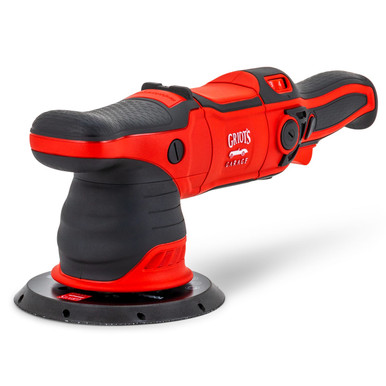YamaHog
Jet Boat Addict
- Messages
- 162
- Reaction score
- 114
- Points
- 112
- Location
- Little Rock, AR
- Boat Make
- Yamaha
- Year
- 2020
- Boat Model
- Limited S
- Boat Length
- 19
I'm about to be doing some minor gelcoat repair on my 195S using the color matched patch paste product from Spectrum, and I'm going to need an orbital buffer/polisher to perform the final polishing with compound after repairing and wet sanding the area. The challenge is that I really want to purchase a DA type polisher that I can use for this repair work, future waxing polishing the boat (gelcoat) AND for polishing/waxing my car & truck. I think what I'm looking for here is a good DA polisher that has a good variable RPM range.
I was looking at something like the Griot's Garage G9, but it looks like the minimum RPM setting is 2000 rpm

 www.griotsgarage.com
www.griotsgarage.com
Watching some gel coat repair videos online and some tutorials on polishing out gelcoat scratches, I've noticed that 1500 rpm or less seems to be desirable. For those of you who have worked with orbitals, is there a particular brand/model that would fit the bill for being aggressive enough for polishing out gelcoat repairs but also easy and safe to use for general buffing waxing on the boat at vehicles? Am I getting too hung up on the RPM range for the machine? I'm looking at 6 inch sized polishers as that seems to be a good size for most applications. I will be using it on my boat, truck, and 2011 Camaro.
I was looking at something like the Griot's Garage G9, but it looks like the minimum RPM setting is 2000 rpm

G9 Random Orbital Polisher
Get a perfect finish with the G9 Random Orbital Polisher. Powerful 1,000-watt motor & patent-pending counterbalance for efficient defect removal.
Watching some gel coat repair videos online and some tutorials on polishing out gelcoat scratches, I've noticed that 1500 rpm or less seems to be desirable. For those of you who have worked with orbitals, is there a particular brand/model that would fit the bill for being aggressive enough for polishing out gelcoat repairs but also easy and safe to use for general buffing waxing on the boat at vehicles? Am I getting too hung up on the RPM range for the machine? I'm looking at 6 inch sized polishers as that seems to be a good size for most applications. I will be using it on my boat, truck, and 2011 Camaro.



